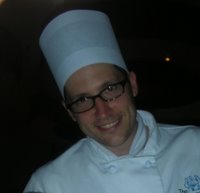THURSDAY THE LONG WAY: BUTTER WITH TOAST
 Thursday highlights food from out of the way places, food memories that have formed the way I view food, both cooking it and eating it. These memories may be inspired by recent meals, the food-media, or anything at all.
Thursday highlights food from out of the way places, food memories that have formed the way I view food, both cooking it and eating it. These memories may be inspired by recent meals, the food-media, or anything at all.After school snacks from childhood--there were several I can remember, namely a grilled cheese sandwich, with tomato. But grilled cheese sandwiches are a whole other post for another day. Today, Thursday The Long Way's after-school snack memory is really simple on first glance: toast. That's right toast. But don't get snotty--it was all in the technique. It was all about the butter and how it was applied.
I don't specifically remember which brand we owned but I'm pretty sure our toaster was a Black & Decker, similar to the one at left. It had the plastic knobs, the glass door and the metal tray you could slide inside under those tubes above that lit up bright red when it was turned on.
 I don't specifically remember which brand we owned but I'm pretty sure our toaster was a Black & Decker, similar to the one at left (click picture for c/o). It had the plastic knobs, the glass door and the metal tray you could slide inside under those tubes above that lit up bright red when it was turned on.
I don't specifically remember which brand we owned but I'm pretty sure our toaster was a Black & Decker, similar to the one at left (click picture for c/o). It had the plastic knobs, the glass door and the metal tray you could slide inside under those tubes above that lit up bright red when it was turned on.First there was the matter of the type of bread to use. I went through phases of course but I stayed away from thinly sliced white or wheat. The best bread to use had a decent crust and was sliced from some type of baguette or loaf-- French, Italian, and when I got a little older, sourdough.
 The earliest phase I remember going through was with Hawaiian bread, King's Hawaiian bread, to be specific. Any of these breads works for our purposes today though-- this Thursday is all about technique.
The earliest phase I remember going through was with Hawaiian bread, King's Hawaiian bread, to be specific. Any of these breads works for our purposes today though-- this Thursday is all about technique.The first step was to change the settings. Not too dark, somewhere between the light and slightly darker brown settings on the knob. Then, the butter technique.
It's the most important part of course. Now as far back as I remember, adults were buttering their bread after toasting it. This made no sense to me. You got that gritty sound from the knife scraping the toast along with the little black crumbs. The butter never melted the right way on the toast and it was far to crispy and crumbly.
I took matters into my own hands. With a thick slice of bread I'd slather the butter on first-- evenly of course, making sure to butter along the edge near the crust but especially heavy in the center. Then in the toaster the bread went, to be closely monitored. While things were getting warmed up, the butter beginning to melt, I'd grab a paper towel and double it up, maybe a glass of water or milk. Then back to the window to watch as the butter melted, turning the knob as needed and opening the oven door to reposition the bread or tilt it and make the butter run into the nooks and crannies that somehow had been missed.
The outer edge of the slice would begin to brown and the butter in the center would melt. It was a balance of a decent outer crisp that spread about a quarter of an inch toward the center and a slight crispiness in the center. Once that balance had been achieved it was time to eat. Just a slight overall brown on top, more mottled in places than anything else-- the goal was buttery-gold goodness, so that when you bit into it there was a little warm melted butter in your mouth, the bread more warmed than toasted, almost so that it seemed fresh-baked.
That was a snack that could hold you over to dinner. Well, maybe two slices.





0 Comments:
Post a Comment
<< Home